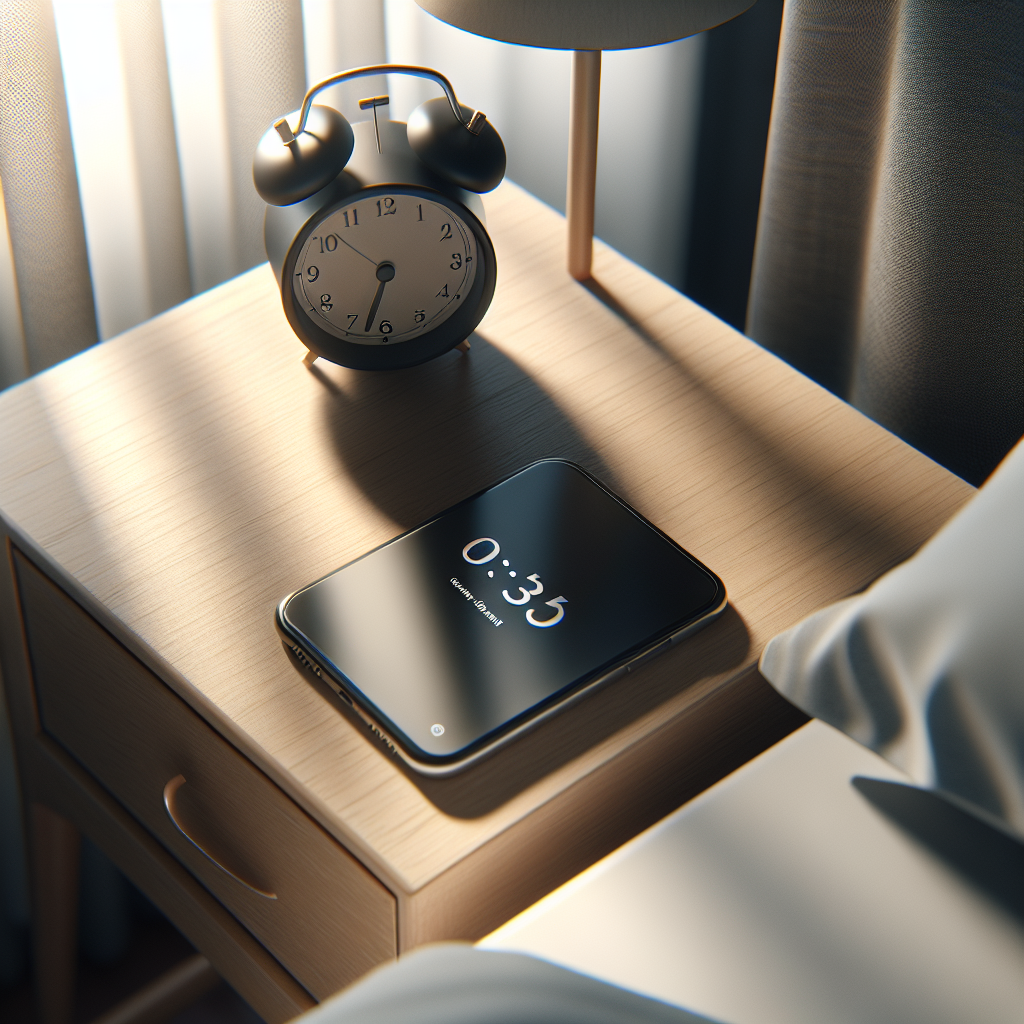Key Insights and Troubleshooting Overview
One of the most frequent complaints among iPhone users is that alarms occasionally fail to activate as expected. This issue can lead to missed appointments, tardiness, or disrupted routines. Fortunately, there are a number of detailed troubleshooting steps and precautions that can help you restore your alarm’s reliability. In this expanded guide, we will examine each corrective method in depth, highlight why problems often arise, and explain how to systematically address them without unnecessary guesswork or trial-and-error.
—
### Verifying Alarm Volume and Sound Settings
The first step in diagnosing an unresponsive alarm is to evaluate the device’s **volume configurations**. Within the **Settings** application, navigate to either **Sounds** or **Sounds & Haptics**. Locate the **Ringer and Alerts** slider, which specifically governs alerts and alarms. If this setting is too low, the alarm tone may not be audible enough to wake you.
It is equally important to check the **Change with Buttons** option. When enabled, the physical volume keys can unintentionally lower the alarm’s sound level if you recently adjusted music or video playback volume. Disabling this feature ensures your alarms consistently ring at the designated volume, independent of media adjustments.
To pre-test a chosen sound, launch the **Clock** app, select **Alarm**, tap **Edit**, and modify the **Sound**. By previewing tones immediately, you can confirm whether they project sufficient volume and clarity.
—
### Restarting the iPhone to Correct Minor Glitches
Sometimes, alarms malfunction due to minor and temporary software irregularities. A complete reboot often resolves these glitches by refreshing system processes. Depending on the model, restart your iPhone by either:
– Holding down the **power button** until the **slide to power off** option appears, or
– Holding both the **power button** and **volume-down button** on newer models until the shutdown slider displays.
After turning the phone back on, test whether alarms behave as intended.
—
### Selecting a More Noticeable Alarm Tone
The iPhone offers a wide range of ringtones, including simple tones, musical tracks, and more subtle effects. Some are significantly quieter or softer, which can be unsuitable for heavy sleepers. Navigate to the **Clock** app, edit your alarm, and within the **Sound** menu, browse the list and preview different options. Choose a sound loud and distinctive enough to ensure it captures your attention when triggered.
—
### Confirming Alarm Time, Days, and AM/PM Settings
Incorrect scheduling is another frequent culprit. Within the **Edit** section of the **Alarm** tab, you can specify the precise time, enable or disable repeat days, and confirm AM or PM. An alarm set for 7:00 PM will naturally fail to ring in the morning, so careful review is essential. Weekly patterns can also be managed using the **Repeat** function, which allows alarms to automatically occur on selected days.
—
### Addressing the Bedtime and Sleep Features
Modern iOS versions introduced a feature called **Bedtime** (or **Sleep** within the Health app starting in iOS 15), designed to encourage healthy sleeping habits. This setting can at times interfere with traditional alarms. If you suspect overlap, open the **Clock** app, tap **Bedtime**, and either disable the feature completely or adjust its schedule and notifications. Alternatively, check the **Health app** for migrated options if you do not see Bedtime in the Clock application.
—
### Deleting and Recreating Faulty Alarms
If adjustments fail, recreate the alarm from scratch. From the **Alarm** tab, use either the **Edit** function with the red minus button or simply swipe left to delete the problematic entry. Then, tap the plus (+) sign at the top-right corner to craft a new alarm with your customized settings. This ensures any hidden corruption or misconfiguration of the old alarm is removed.
—
### Using Only One Alarm Application at a Time
Running multiple alarm clock applications simultaneously can generate conflicts. Third-party alarm apps are not as deeply integrated into iOS and often require the app to remain open in the background. To eliminate competition for system resources, uninstall external alarm apps, restart your iPhone, and rely solely on Apple’s built-in Clock app.
—
### Disconnecting Audio Accessories and Bluetooth Devices
On rare occasions, your alarm may unexpectedly play through a Bluetooth headset, wireless speaker, or wired headphones rather than the phone’s internal speakers. If this occurs, go to **Settings > Bluetooth** and temporarily disable Bluetooth. Also detach any wired accessories from the headphone jack. Verify alarm function afterward to ensure the sound emerges directly from the device itself.
—
### Keeping iOS Updated
Running outdated firmware can cause persistence of previously patched bugs, including alarm malfunctions. Regularly update through **Settings > General > Software Update**, or alternatively by connecting to a computer and using iTunes (or Finder on macOS Catalina and later). Install the most recent iOS version to ensure all alarm-related issues addressed in system updates are incorporated.
—
### Restoring the iPhone to Factory Defaults as a Last Resort
If none of the above interventions provide resolution, the most comprehensive—but also most drastic—method is performing a factory reset. This procedure completely erases all personal settings, apps, and data, returning the phone to its original state. To initiate this, open **Settings > General > Reset** (or **Transfer or Reset iPhone** on iOS 15 and later) and select **Erase All Content and Settings**. Because it resets every parameter, this generally corrects even deeply embedded software conflicts preventing alarms from ringing properly. However, back up crucial data beforehand, as the process is irreversible without a prior backup.
—
### Why iPhone Alarms Sometimes Fail
Alarm malfunctions usually stem from one of a few key causes:
– **Independent volume controls**: The iOS system assigns separate controls for system media (music, videos) and alarms. Adjusting sound while streaming music may not change alarm volume, leaving it too low or inaudible.
– **Non-optimal tones**: Choosing an exceptionally soft, subtle, or muted ringtone reduces chances of waking up.
– **Incorrect scheduling**: Misconfigured AM/PM or repeat settings commonly cause missed alarms.
– **Multiple alarm apps**: Third-party alternatives can interfere with the built-in app, especially if they require constant background operation.
– **Audio output redirection**: Sometimes the alarm mistakenly plays through external Bluetooth devices or headphones.
—
### Frequently Asked Questions
**Do alarms still sound when the iPhone is on silent mode?**
Yes. Activating the physical mute switch or **Do Not Disturb mode** does not suppress alarms. However, if your alarm tone is set to “None” or the alarm volume is excessively low, you may only feel vibration instead of hearing an alert.
**How can I set a custom song as my alarm tone?**
Open the **Clock** app, add or edit an alarm, and tap **Sound**. You can then select a track from your **Music library**, provided the song is stored locally. Streamed or unavailable music will not function.
**How do I assign a label or custom name to my alarm?**
While creating or editing an alarm, tap **Label** to type a description such as “Morning Workout” or “Meeting Reminder.” This customization is helpful if you manage multiple alerts.
**Will alarms work when Airplane Mode is enabled?**
Yes. Since alarms operate locally and do not rely on network connectivity, they continue to function even when Wi‑Fi, cellular data, and Bluetooth are disabled by Airplane Mode.
—
In conclusion, resolving iPhone alarm issues involves a progressive approach: beginning with simple adjustments like volume checks and sound previews, then advancing through restarts, rescheduling, and software updates, before finally resorting to factory resets. By systematically implementing these strategies, you can restore dependable wake-up calls and ensure that your device functions consistently when you need it most.
Sourse: https://www.lifewire.com/iphone-alarm-not-working-4177484



